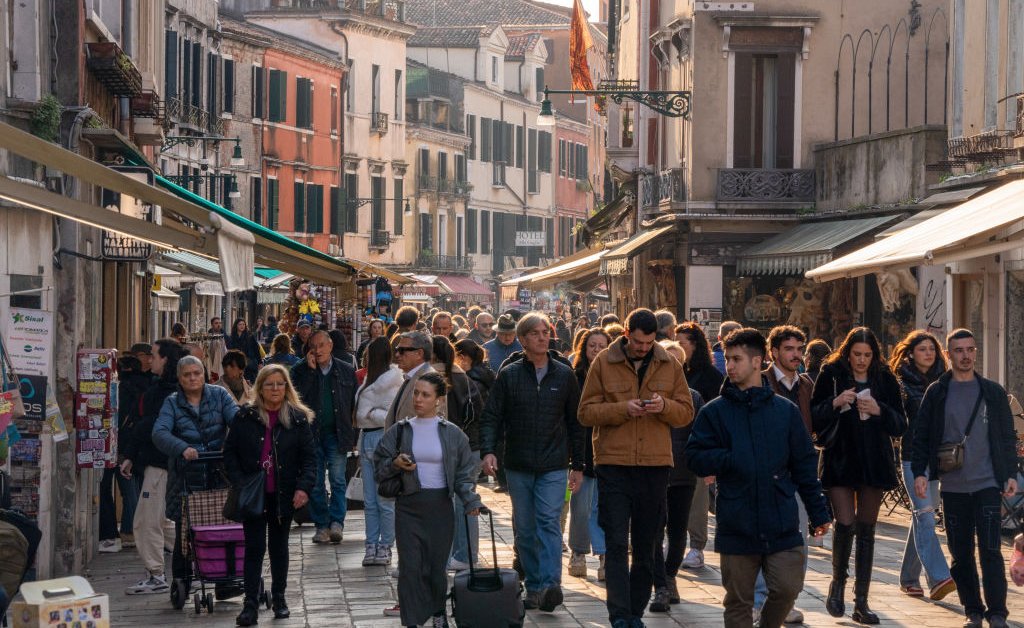Venice, the historic Italian city known for its canals, would like to find a balance between its residents who live there and help maintain the place and its visitors, an important source of economic income but increasingly a burden on social services and viability of the city.
In recent years, the balance has changed: in the 1970s, Venice had about 175,000 inhabitants; as of last year, its population fell below 50,000, and the number of tourist beds exceeded residents for the first time. Venice attracts around 20 million visitors a year, many of whom are referred to as ‘hit and run’ tourists, as they don’t even stay overnight, but rather stop by for a few hours just to see the best attractions.
Venice authorities have long debated measures to counter over-tourism, and on Thursday the municipal government introduced a new experimental scheme to charge day-trippers for access to the city centre.
Mayor Luigi Bruniaro insists the access fee is not meant to generate revenue, but rather to “unburden” the city. At a modest cost of €5 (just over $5 depending on the exchange rate) per person per day, the measure aims to limit, but not completely stop, foreign foot traffic. “The goal is not to close the city, but not to let it explode,” Bruniaro said at a press conference in February.
For now, the access charge only applies on 29 peak travel days – mostly weekends – from April 25 to July 14. The fee is paid online through the city’s website.

The entrance fee is applicable to visitors between 8:30am and 4:00pm in the historic center of Venice, but not on the smaller outer islands. Overnight visitors who pay a tourist tax, which was introduced in 2011, included in their accommodation fees, are exempt from the entrance fee, as are residents, commuters, students and children under 14.
Although initial talk of an access fee included the potential for turnstiles, the system as implemented would instead be enforced through random checks by security staff. Access fee payers will receive a QR code that they can present, while some exempted categories can present their identity documents and others can apply for an exemption QR code. Fines for non-payment of the access fee will range from €50 to €300.
The fee was met with some criticism: a former mayor called it “pure madness, completely illegitimate and unconstitutional”. But Bruniaro supports the move. “We have a duty to preserve these great historic centers of the world,” he told reporters earlier this month, adding that if the experimental scheme, which he acknowledged could be improved while its results are monitored, succeeds, it can become a model for other cities around the world.
“The phenomenon of mass tourism is a challenge for all tourist cities in Europe,” Simone Venturini, Venice city council member responsible for tourism and economic development, told Reuters. “But being smaller and frailer, [Venice] is even more affected by this phenomenon and is therefore taking action earlier than others to try to find solutions,” he said, adding that the fee could even be increased at different times of the year to discourage arrivals.
The entrance fee is just the latest in a number of recent schemes that Venice authorities have implemented to reduce the impact caused by over-tourism. In 2021, the city banned large cruise ships from entering inland waterways, and earlier this year imposed a 25-person limit on tour groups and a ban on loudspeakers in the city’s historic downtown.
Venice and its lagoon were first designated as a United Nations Educational, Scientific and Cultural Organization (UNESCO) World Heritage Site in 1987, but the UN agency last year considered placing them on its list of endangered sites. world heritage site as the city reels from the effects of climate change and mass tourism.

